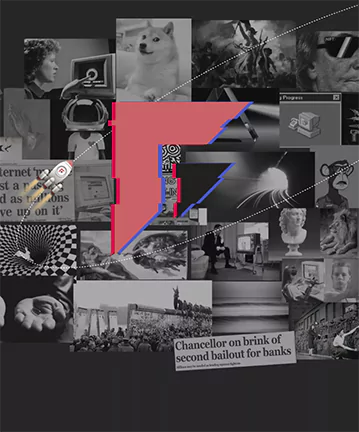There are 24 spots on your home screen for an app. With ~3 million apps available, competition for home screen placement is fierce. The importance of being a home screen app is due to consumers needing to see the app regularly to remind them to use it. Out of sight out of mind, after all.
Once an app finds that sacred home screen spot, the daily engagement is typically an order of magnitude higher than those apps lost to page 2, 3, 4… and as such, the retention is materially higher.
If home screens are the mecca, companies are increasingly thinking about how they can get there and stay there. It can be reached with a single business and a single use case but this is harder, especially with ever changing consumer tastes and an increasingly competitive world. The way to stay there, long term, is to become a Super App.
What is a Super App? It has several qualities:
- The company has multiple business units
- All business units can be accessed from the same simplified app
- The same customers can use multiple units of the app
- Often the same business units have multiple use cases
- User information is shared across business units
- Many are supported by their own payments infrastructure (now or future)
- Super Apps are true brands, with high unaided brand awareness
These are qualities we have seen at Calm, which is why we are reinvesting and leading the Series C in Calm today.
Calm
We initially invested in Calm 2 years ago and had a strong thesis on the company. Since then, Calm has emerged as a Super App, giving us what we usually get in 10+ apps all in one place. Plus, all for just 1 price of $70 a year.
Super Apps have a lot of features. They also have a lot of use cases. In Calm’s case, in 2020 alone, I have used Calm in the following ways:
- Stephen Fry has read me to sleep 156x
- Daily meditation (most, albeit not all, days!)
- The deep concentration meditation was used during labor
- Calm’s Disney acoustic music was the first music our new baby heard
- Regular journaling now logged through the Calm app
- The Calm Spark provides insightful content to keep learning
- Yoga classes have kept me healthy during Covid
There are many business units, all accessed from one Calm app. The same customers, globally, use Calm and often for different purposes (not everyone uses the focus meditation for birthing a child). The data is all kept safely but no payment infrastructure (yet!). Last but not least, Calm is rapidly becoming an internationally recognized true brand. If you were in any doubt about that, see their brand campaign during the election this year. 🙂
Other leading Super Apps:
Tencent’s WeChat now has more than 1 billion monthly active users globally where they have integrated messaging, eCommerce and financial products into one app. They have created convenience through combing multiple functions.
You can use the same app for a whole day out: message friends, check cinema times, book tickets and a restaurant, order a taxi and then pay for the meal, while splitting the payments with friends.
Thinking through the qualities of a Super App, WeChat has multiple business units, all accessed from one app. The same customers (more than two-thirds of China and international) can use the many features and they can be used in many different ways. Some message to communicate, some to buy, some to transfer money. Their data and payments infrastructure is already in place resulting in little reason to leave the app. Lastly, it is most certainly a household brand name.
Gojek
Gojek started in Indonesia as a call center to connect couriers and is now a $10bn Super App. They have 20 different services, including on-demand travel, food and also integrated digital payments. All available through one app.
A Super App doesn’t necessarily cannibalize other apps. It also takes from other leisure activities, such as watching TV. You can see this in Gojek’s first market, Indonesia, which now has the highest mobile usage anywhere in the world, with 6 hours of daily mobile use, double that of the U.S.
Uber
For those consumers who use Uber daily or at least weekly, it may already be a home screen app. However, many use it infrequently or stopped taking Ubers during the pandemic. This likely resulted in Uber falling from the home page to page 2 (as it did for me in 2020). However, if you also take scooters or order Uber Eats then there is a higher likelihood that you keep Uber on the home screen. After all, Uber as a Super App has multiple purposes.
This time last year, Uber’s CPO, Manik Gupta, said “We really want to be the operating system for everyday life. What that really means is being the one-stop shop for transportation and daily commerce needs.” Whether you are ordering an Uber, paying for an electric scooter or ordering food, it is all done in the Uber app. They landed on moving you from A to B and expanded on moving anything from A to Z.
Uber understands that being top of mind and a home screen app is key, whether or not users order the original Uber product of a car. Since adding scooters, food and more, they believe all users will want to place Uber on their home screen, As Manik stated “How do we build the long term user retention, long term user engagement, because we have more to offer in a seamless way?”
We are thrilled to announce that Lightspeed is re-investing and leading the Series C in Calm. The next Super App.
☞ To hear more of my thoughts in the future, follow me on Twitter
Authors




